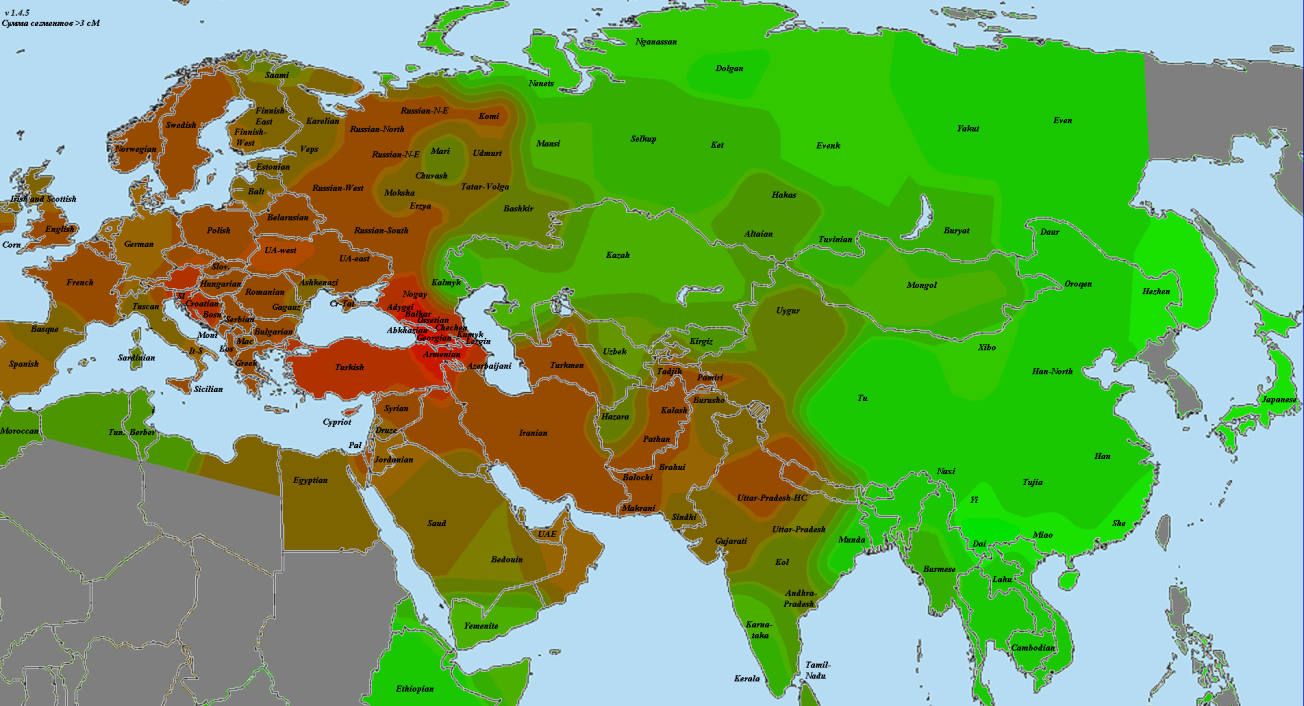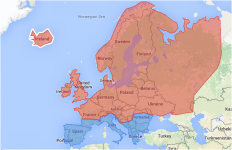Angela,
For the last time, I don't have a dog in this fight. My interest is intellectual, not emotional. I'm interested in the history and pre-history of Europe. I've been following this interest since university and graduate school. It was at that time that I discovered Luigi Cavalli-Sforza and realized that his and similar researches might be used to answer some of those questions.
Angela mine too is intellectual, really!
What could have led you to believe that I give a darn about the relationship of Italians to PIE? I've already told you that I don't identify with any of these ancient groups. It's all too long ago, and we're all too mixed by now. Plus, everything I've seen in terms of autosomal analyses indicates that Italians in fact have a lot less Yamnaya ancestry than people in northern and eastern Europe. So how could I possibly think that Italians are closer to PIE than Balto Slavs even if I had such a bizarre view of the world?
Well, then I'm sorry, I misjudged your intentions.
It's apparently difficult for you and your side kick Rethel to understand it, but this isn't personal for me. I just try to follow the papers, and I also try not to get too far ahead of the data. So, sometimes I agree with your interpretation of the data, and sometimes I agree with the interpretation of the data of other posters like Alan. I often agree with Bicicleur or Maciamo or Le Brok, but sometimes not. I call it as I see it in each individual case, and not to fit any "side".
I agree that you are not getting ahead of the data (with one exception in which you did get ahead of the data, but about this - read below), but it seems that you are sometimes also slightly lagging behind it.

As for me - I am open to all possibilities even if I get ahead of the data sometimes (but I don't go
against the data).
As to "substance", if you're now "certain" about all of this, good for you. I'm not. I don't see why that should be such a problem for you and throw you into this emotional turmoil. You claim to KNOW that Corded Ware represents a movement of Yamnaya people into later Corded Ware areas. I don't believe the academics made that claim, nor do I think there's any proof for that in the archaeology. Rather the opposite. The genetics also show that they were not identical to Yamnaya people. But hey, if you want to go with that, fine with me.
Let's clarify something - I'm not saying that Corded Ware
for sure descended from Yamnaya, but that it either descended from Yamnaya, or had a recent common ancestor with Yamnaya (for example Khvalynsk, but maybe something else). And by the way - it seems quite probable that the westward movement of R1b-L51 (or pre-L51 which later gave birth to L51) into Europe also preceded the emergence of Yamnaya culture, so if we are going to claim that PIE did not exist before Yamnaya, and Yamnaya were the VERY FIRST PIEs, then it is possible that L51 was not part of the PIE culture.
So far Yamnaya appears to be overwhelmingly Z2103, which is "Eastern" R1b.
In that same vein, I'd like to direct your attention to your post number 238 in this thread where you have a statement in quotes presumably by me to the effect that:
"And Angela's idea that Balto-Slavs in terms of Y-DNA are "direct descendants of EHGs, not Indo-Europeans" is wrong."
I don't remember saying that, although I might have in a moment of carelessness, so if you can direct me to the thread and post where I said that I would appreciate it as I would like to edit the post. If you can't do that I would appreciate it if you could edit your post to more clearly reflect my opinion on the matter.
What I said in this thread and what is my opinion, is the following:
"I believe, as I said at the time, that the people who helped to form Corded Ware, in particular, could have been a "related" population to Yamnaya and not a descendent of Yamnaya, and therefore an "Indo-Europeanized" population. In either case, however, they were heavier in EHG, and with some EEF, and therefore carrying less "CHG". Further north, some of the Indo-Europeanized groups might have been very heavily EHG. Further south the Indo-European groups might have been more heavily CHG."
I'm not sure if Corded Ware was formed by a Pre-Yamnaya group (ancestral to both Corded Ware and to Yamnaya - that could be for example Khvalynsk), or by some part of Yamnaya who emigrated in that direction. But you are definitely going ahead of the data when you assert with such boldness that "more CHG-like" = Indo-European and "more EHG-like" = Indo-Europeanized. I'm also not sure if Corded Ware were heavier in EHG - weren't they 75% Yamnaya and 25% EEF + WHG ??? So where is that "more EHG", they had just as much EHG as Yamnaya, their additional amount of "some HG" came from local Central European EEF + WHG, not from EHG.
Or maybe I'm missing something and you are more up-to-date with this autosomal stuff.
Although Khvalynsk was more EHG than CHG, even Yamnaya was still slightly more EHG (Yamnaya_Samara appears as 47% CHG and 53% EHG in Mathieson 2015). So why this assumption that CHG were the "original" PIEs, and EHG were "Indo-Europeanized" ??? Of course a smaller group can sometimes assimilate a more numerous group, but in this case EHG has some numerical advantage. And as you know, R1b was present already in Samara EHG, who did not have any CHG admixture. So once again, we don't know if R1b in Yamnaya originated from EHGs, or from CHGs, or yet from someone else (both EHGs tested so far were J).
In Iran there are both basal R1a clades and basal R1b clades. Underhill in his 2014 study on R1a, suggested that R1a perhaps originated from Iran. So if "Teal people" or CHGs came from to the steppe from areas to the south of Caucasus, we cannot exclude the possibility that they carried R1a with them, just like we cannot exclude the possibility that R1b-M269 emerged among EHGs (not among CHGs), because we know for sure, that some R1b existed among EHGs.
As to your comments about the CHG, I'm not sure if you're addressing me. Almost everything I've posted in this thread has been in the form of a question, so I don't understand what you could possibly find that is so upsetting in my comments. I haven't actually made up my mind about some of the implications of this paper. Is that ok with you? When I have, which will probably be after Thanksgiving as I'm cooking for eighteen, I'll undoubtedly post about it.
It is ok with me.
Fwiw I also don't see what's so upsetting about the comments others have made about it
Nothing. We just all got too emotional. But was it my fault? Rather collective fault, if not just Goga's fault.
I'm sorry to see a poster for whom I've felt a great deal of respect go down this path. I actually wasn't including you in that third group although perhaps I was mistaken.
Angela I also feel a great deal of respect for you and I don't want to argue any longer.
I apologize if negative emotions made my posts appear "hostile" or "aggressive".




